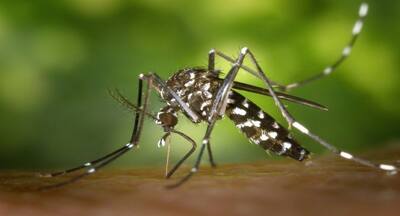Don’t Miss Out on the Latest Updates.
Subscribe to Our Newsletter Today!
Select Language
COVID-19 and dengue fever: Know the difference

Fever is a common symptom of both COVID-19 and dengue. Dengue can also cause respiratory symptoms, such as cough and sore throat, which are also common among COVID-19 patients. Here are some points that can help distinguish the two diseases.
Globally, the number of confirmed COVID-19 cases have jumped to 3,356, 205 including 238,730 deaths, according to the latest report from the World Health Organization (WHO). While the countries around that world are focussing on fighting the pandemic, many health experts are concerned about the spike of other annual outbreaks, including dengue.
Warmer temperatures and unsanitary conditions allow the mosquitoes carrying the dengue virus to thrive. But as countries grapple with the COVID-19 pandemic, fumigation drives and awareness campaigns have taken a back seat, posing a risk of possible spike in dengue cases this year.
It is estimated that around 400 million dengue infections occur worldwide each year, with about 96 million resulting in illness. The number is likely to increase significantly this year, as the countries are busy tackling COVID-19 outbreak. Already, there have been reports of rise in dengue fever from various countries across the globe amidst the COVID-19 pandemic.
Also Read
Fever is a common symptom of both COVID-19 and dengue. Dengue can also cause respiratory symptoms, such as cough, sore throat, which are also common symptoms of COVID-19. Then how would you know if you have dengue or COVID-19?
COVID-19 and dengue fever
Experts say dengue and COVID-19 are difficult to distinguish because they have shared clinical and laboratory features. In Singapore, some patients with negative results from rapid serological testing for dengue were later confirmed to have COVID-19. Thought COVID-19 and dengue share a few common symptoms, like fever and cough, there are different in many ways. Here are some points that may help you distinguish between dengue fever and COVID-19.
Symptoms Of Dengue
Dengue is a mosquito-borne viral infection caused by dengue virus (DENV), which is transmitted to humans through the bites of infected female mosquitoes. It leads to a severe, flu-like illness, but seldom causes death. Usually, a person develops symptoms four to six days after infection and the symptoms last for up to 10 days. Dengue is suspected if you have a sudden high fever (40 C/104 F) accompanied by two of the following symptoms:
- Severe headache
- Pain behind the eyes
- Severe joint and muscle pain
- Fatigue
- Nausea
- Vomiting
- Skin rash, which appears two to five days after the onset of fever
- Mild bleeding (such a nose bleeding, bleeding gums, or easy bruising)
- Swollen glands
Severe dengue is a potentially fatal complication that occurs normally about 3-7 days after illness onset. It can lead to plasma leaking, fluid accumulation, respiratory distress, severe bleeding, or organ impairment. Warning signs associated with severe dengue can manifest when the fever starts dropping (below 38 C/100 F) in the patient. Warning signs of severe dengue are -
- severe abdominal pain
- persistent vomiting
- rapid breathing
- bleeding gums
- fatigue
- restlessness
- blood in vomit.
If a patient shows this symptoms, he/she should be kept in close observation with proper medical care to avoid complications and risk of death.
Symptoms of COVID-19
COVID-19 is the infectious disease caused by the most recently discovered corona virus. The virus affects people in different ways. Most infected people will develop mild to moderate symptoms.
The most common symptoms of COVID-19 are fever, tiredness, and dry cough. Some patients may have aches and pains, nasal congestion, runny nose, sore throat or diarrhea. These symptoms are usually mild and begin gradually.
Some people become infected but don't develop any symptoms and don't feel unwell. Around 1 out of every 6 people who gets COVID-19 becomes seriously ill and develops difficulty breathing. Some people may develop more severe forms of the disease, such as pneumonia. If you have fever, cough and difficulty breathing, you should seek medical attention.
How does COVID-19 spread
COVID-19 virus can spread from person to person through small droplets from the nose or mouth which are released when a person with COVID-19 coughs, sneezes or exhales. When these droplets land on objects and surfaces around the person, other people may catch it by touching these objects or surfaces, then touching their eyes, nose or mouth.
People can also catch COVID-19 if they breathe in droplets from a person with COVID-19 who coughs out or exhales droplets. That's the reason why it is advised to stay more than 1 meter (3 feet) away from a person who is sick.


